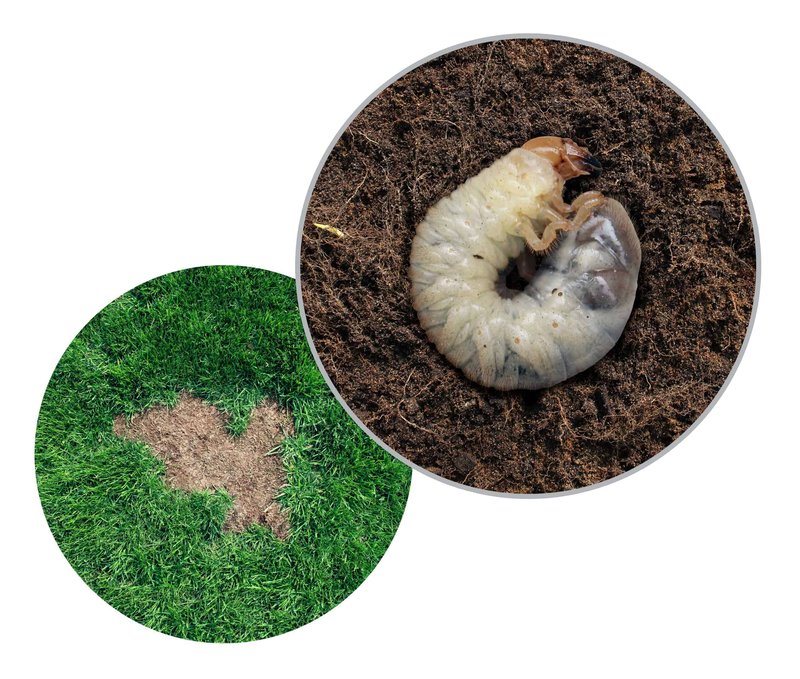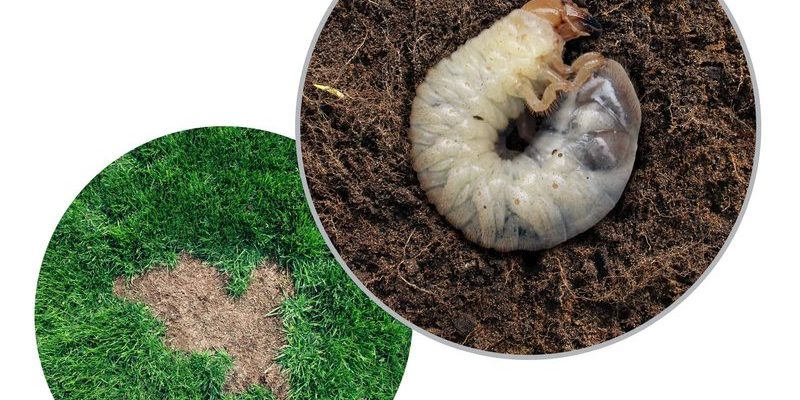
Like a game of chess, where the right strategy can save you from checkmate, understanding the specific types of grass that attract these critters can help you safeguard your outdoor space. Let’s dive into the world of grub worms and discover which lawn types are at risk and how you can protect them.
What are Grub Worms?
Grub worms are the larvae of various beetle species, most commonly the Japanese beetle and the May/June beetle. These pests typically live underground, munching on grassroots and creating a pathway to destruction in your lawn. When the population of grub worms is high, the damage can spread quickly, causing significant issues in a relatively short time.
You might be curious about when these pests tend to appear. Grub worms thrive during the warm summer months, generally from late spring to early fall when the soil temperature rises. During this time, they feast on your grass roots, making it crucial to identify the signs of their presence early.
Identifying Vulnerable Lawn Types
Not all grass types are created equal when it comes to resilience against grub worms. Some varieties are more appealing to these pests, while others seem to have built-in defenses. Let’s take a closer look at which lawns are most at risk.
Cool-Season Grasses
Cool-season grasses, such as Kentucky bluegrass, fescue, and ryegrass, are popular in northern climates. While they can create a thick, lush lawn, they are also quite inviting to grub worms. The soft texture and dense roots of cool-season grasses make them an ideal buffet for these pests.
In a battle between your grass and grub worms, cool-season grasses often find themselves on the losing end. If you have this type of lawn, it’s essential to keep a close eye on the health of your grass, especially during the warmer months of the year.
Warm-Season Grasses
On the flip side, warm-season grasses like Bermudagrass, Zoysiagrass, and Buffalograss tend to thrive in southern climates and are generally more drought-resistant. However, certain warm-season grasses can still be attractive to grub worms, particularly if they are stressed or unhealthy.
For example, Bermudagrass, known for its resilience and ability to recover quickly, can still fall prey to grub worms if it’s not receiving proper care. Regular maintenance, including watering and fertilizing, can help keep your warm-season grass in tip-top shape and less appealing to these pests.
Factors That Increase Grub Worm Infestation
Several factors contribute to the likelihood of grub worm infestations in your lawn. Understanding these can help you take proactive steps to protect your grass.
Soil Conditions
Grub worms prefer moist, nutrient-rich soil, as it provides the perfect environment for them to thrive. If your lawn has poor drainage or stays wet for extended periods, it might create a haven for these pests.
To combat this, consider improving drainage by aerating your lawn or managing your watering habits. This can not only help you avoid grub infestations but also promote healthier grass overall.
Over-Fertilization
It may be counterintuitive, but over-fertilizing your lawn can actually attract grub worms. Excess fertilizer can create lush growth that makes your grass more appealing to these pests. Over-fertilization can also weaken the grass roots, making it easier for grub worms to do their damage.
Stick to recommended fertilization schedules, and consider using organic fertilizers that release nutrients at a slower rate. This way, you can maintain a healthy lawn without inviting unwanted guests.
Signs of Grub Worm Infestation
Recognizing the signs of grub worm activity is key to effective lawn care. The sooner you detect an issue, the easier it will be to address it.
Dead Patches
One of the first signs of grub infestation is the appearance of dead patches in your lawn. If you notice areas where the grass has turned brown or died off, it’s worth digging down a few inches to check for grubs. Often, you’ll find a handful of these larvae munching away at the roots.
Sparse Grass Growth
Another indication of grub worm problems is sparse or thinning grass. If your lawn is struggling to grow, even with regular watering and fertilization, grubs might be the culprit. Their root-eating habits can limit nutrient uptake, leading to weak grass.
Preventative Measures for Your Lawn
Once you understand how to identify and address grub worm problems, you’ll want to take steps to protect your lawn from future infestations.
Regular Lawn Maintenance
Maintaining a healthy lawn is your best defense against grub worms. Regular mowing, proper watering, and appropriate fertilization can create a strong and vibrant lawn that is less appealing to these pests.
Make sure to aerate your lawn at least once a year to improve soil health and drainage, which can discourage grubs from setting up camp.
Natural Pest Control Options
If you do suspect a grub worm problem, consider natural pest control methods before reaching for harsh chemicals. Products such as nematodes, tiny worms that attack grubs, can be a safe and effective solution. These beneficial organisms can help keep grub populations in check without harming your lawn.
Understanding which lawn types are most vulnerable to grub worms is crucial for maintaining the health and beauty of your outdoor space. By identifying the grass types most at risk, recognizing signs of infestation, and implementing proactive measures, you can protect your lawn from these pesky pests. Remember, a little knowledge goes a long way in keeping your lawn lush and vibrant. With the right care, you can enjoy a thriving green yard and keep those grub worms at bay!

